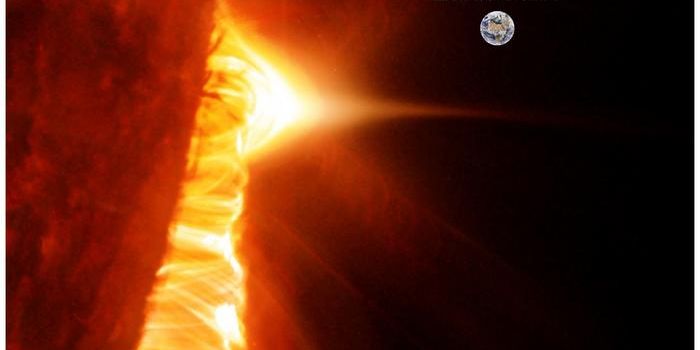Strange Flickering of Distant Star Baffling Scientists
Astronomers are incredibly interested in data accumulated by NASA’s Kepler Space Telescope as of late. Scientists have been watching the actions of distant stars in our galaxy, and while it’s normal for the light from stars to flicker occasionally as planets orbit them, one star in particular, dubbed KIC 8462852, is showing a lot more activity than the rest of them, and it’s baffling experts.

Kepler has been watching this particular star since 2009, and the data accumulated shows very unusual flickering that made scientists think their space telescope equipment was malfunctioning, but after everything seemed to be working right, scientists took to other theories.
“We’d never seen anything like this star,” said Tabetha Boyajian, post doctorate at Yale. “It was really weird. We thought it might be bad data or movement on the spacecraft, but everything checked out.”
Since planets are known to cause repetitive flickering for stars as the planets rotate at the same relative speed and in the same relative pattern throughout their orbit, scientists understand that if flickering were being caused by a planet, that the light flickering would also show patterns that reflect on the repetitive planetary movements.
But the one star scientists are interested in isn’t showing patterns at all. Instead, it’s completely random. The flickering doesn’t appear to be very predictable, almost like something else is at work here.
There are some scientists who believe that there is a lot of floating dust surrounding the star that could be causing it, but this is something you would typically see in a younger star, and the particular star in question is somewhat of a mature star. Moreover, no infrared light is being emitted from the matter, which is typical for a star with dust and debris floating around it.
Among the 150,000 stars that scientists have studied with the Kepler Space Telescope, this is the only star known to have these strange out-of-tune flickering effects, and so you can imagine why it’s getting so much attention from experts that have some pretty serious, but out-of-this-world theories, including the possibility of aliens.
“When [Boyajian] showed me the data, I was fascinated by how crazy it looked,” Jason Wright, an astronomer from Penn State University said. “Aliens should always be the very last hypothesis you consider, but this looked like something you would expect an alien civilization to build.”
There is a possibility that it could be nothing more than coincidental swarm of comets, but scientists think it may be something more interesting. More research will be carried out over the next year, as experts work together to carry out more observations.
Source: The Atlantic








